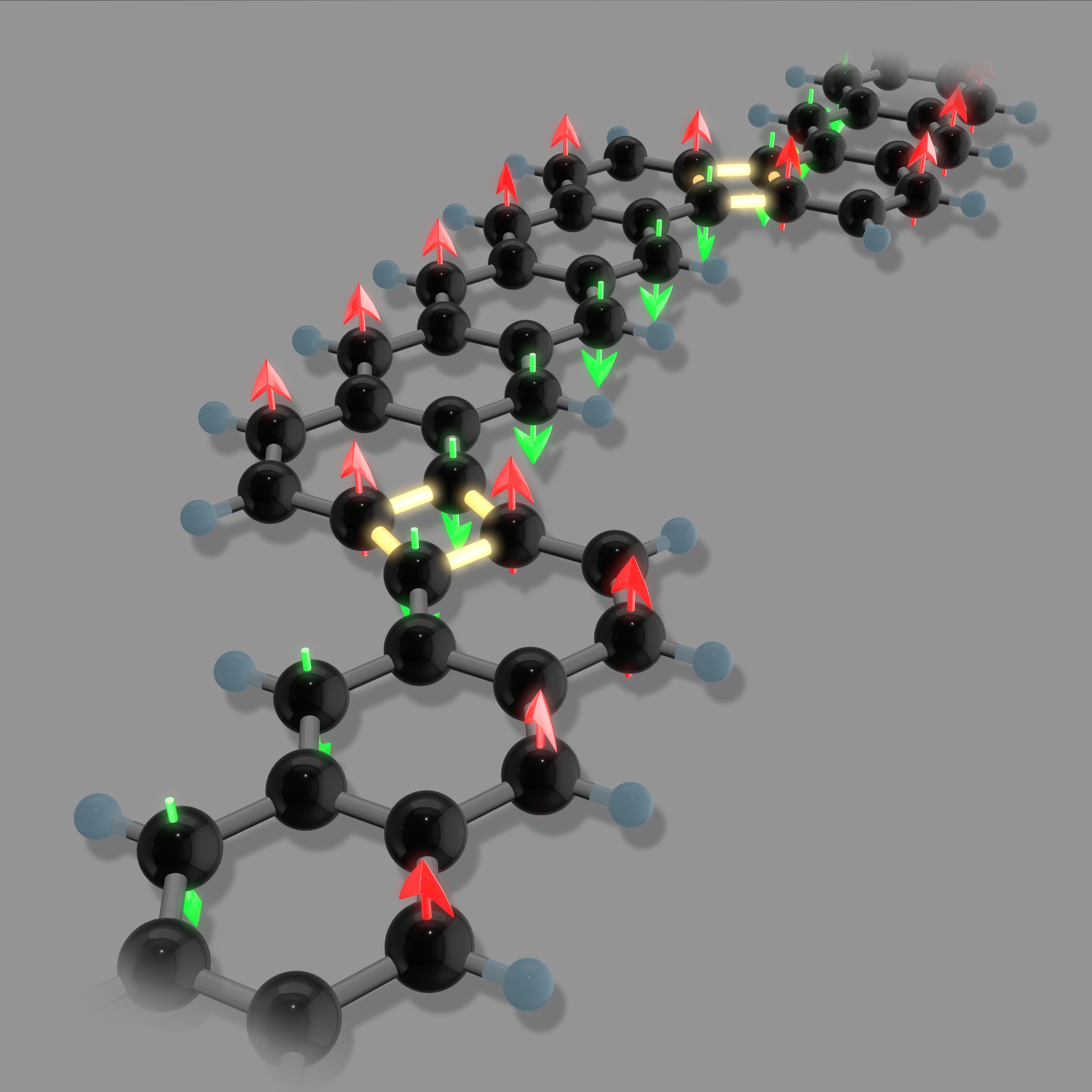Through synergetic collaborations between theory and experiment, Dr. CUI Ping, Dr. ZENG Changgan, and their coworkers made a new advance in developing graphene-based spintronics. They revealed that a carbon quartet consisting of a square-shaped carbon tetragon connecting two narrow zigzag graphene nanoribbon (ZGNR) segments is able to regulate the spin channels along the two edges of the ZGNRs, and to manipulate the spatial propagation trajectory of each spin channel via charge doping. Experimental realizations of such carbon quartets have also been achieved on a properly patterned gold surface. This work was published in Physical Review Letters on Jan 14th, entitled “Carbon Tetragons as Definitive Spin Switches in Narrow Zigzag Graphene Nanoribbons”.
Spin-polarized states harbored by graphene-based material systems are of particular interest due to their potential applications in future spintronic devices. Most previous studies have been focused on the two edge states of ZGNRs, as well as their effective control by using electric or magnetic fields, edge engineering, carrier doping, etc. CUI et al. proposed the first-known predictive design, based on quantum-mechanical principles, of a topological spin switch that is capable of regulating the spin channels along the two edges of ZGNRs. First, ZENG’s group observed experimentally the possible existence of the carbon-tetragon connectors between two neighboring ZGNR segments. Secondly, CUI and her collaborators used first-principles calculations to show that, when narrow ZGNRs are connected to form junctions or superlattices, properly placed square-shaped carbon tetragons not only serve as effective bundles of the two incoming spin edge channels, but also act as definitive topological spin switches for the two outgoing channels. They further showed that such spin switches can lift the degeneracy between the two spin propagation channels, which enables tunability of different magnetic states upon charge doping. Preliminary experimental supports for the realization of such tetragons connecting nanoribbon segments have also been obtained, synthesized by cyclodehydrogenation of pentacenes on a reconstructed Au(110) surface. Such spin switching functions, once fully established, are expected to have a broad range of applications in spintronics and quantum computing.

Conceptual illustration of the carbon quartets as definitive spin switches.
This work was supported in part by the NSFC, CAS, MOST, and MOE.
(International Center for Quantum Design of Functional Materials at Hefei National Laboratory for Physical Sciences at the Microscale, Synergetic Innovation Center of Quantum Information and Quantum Physics)